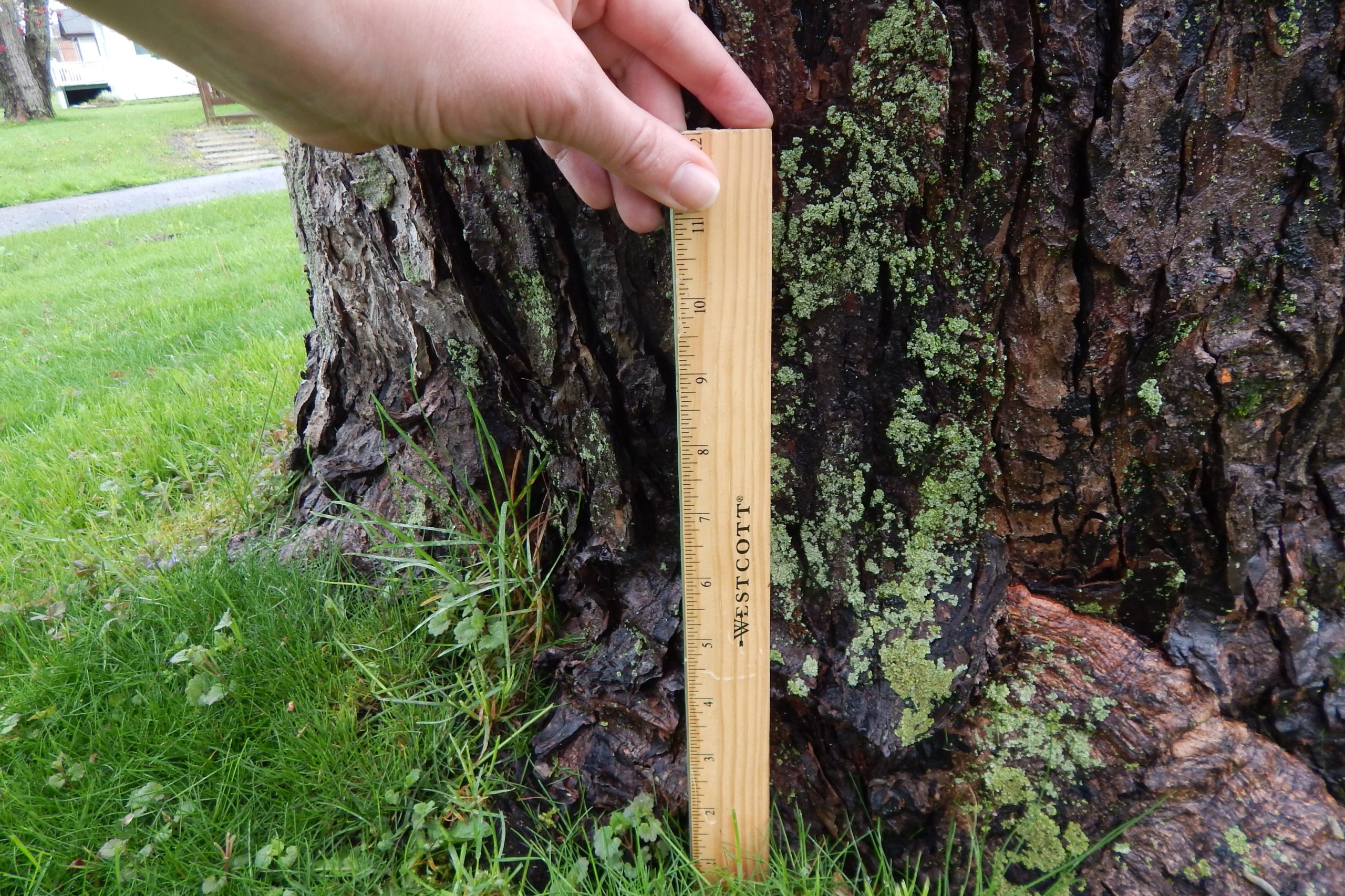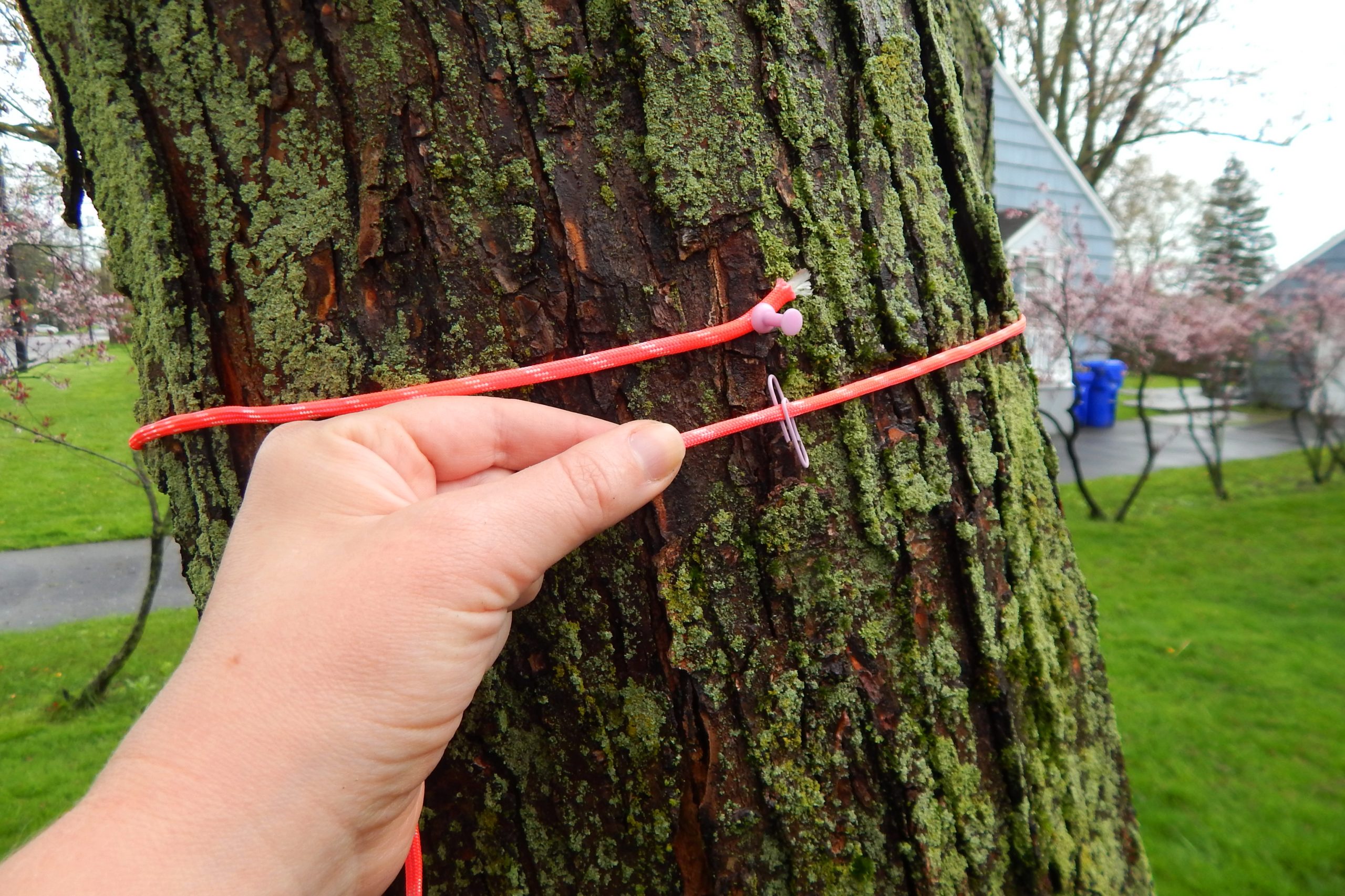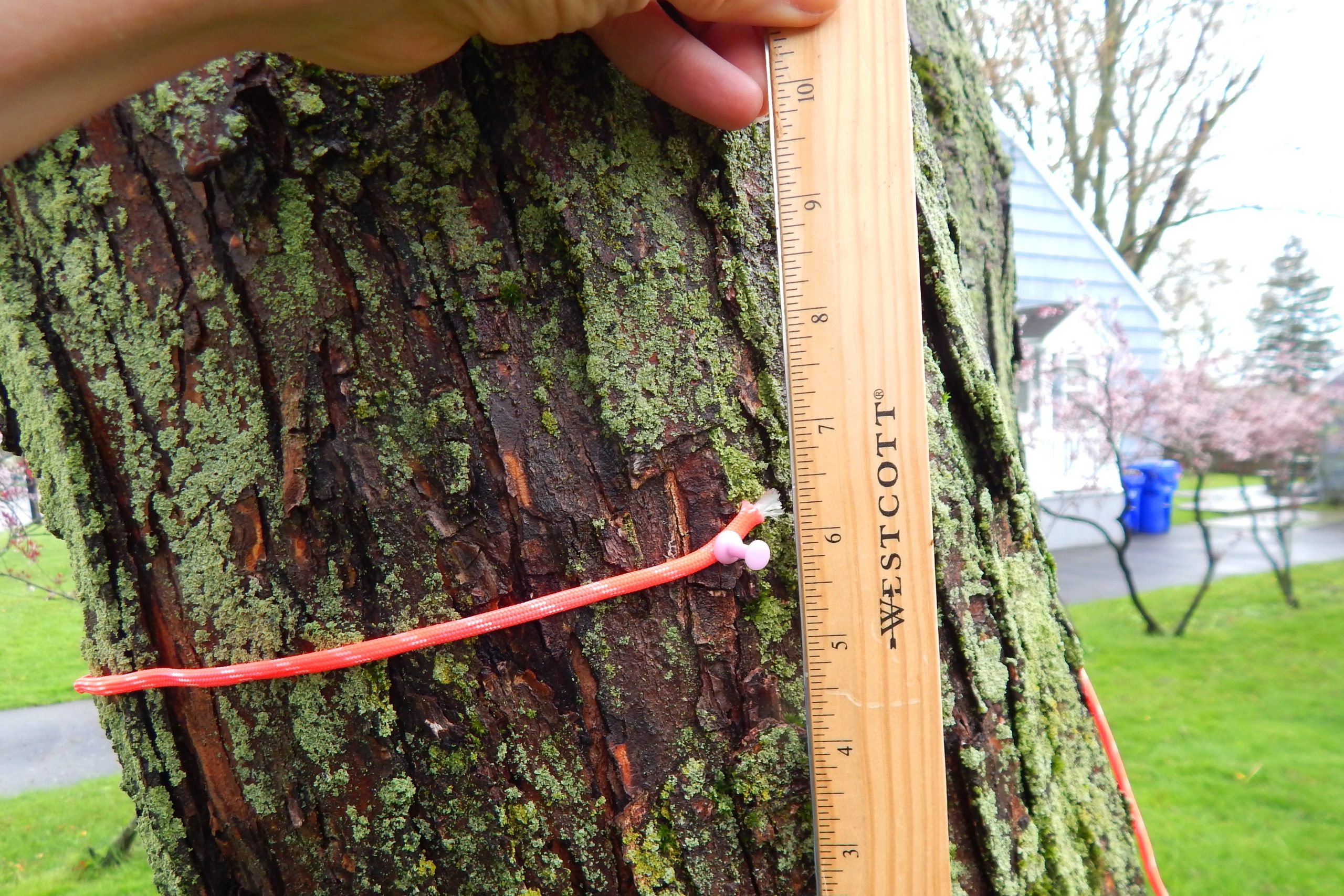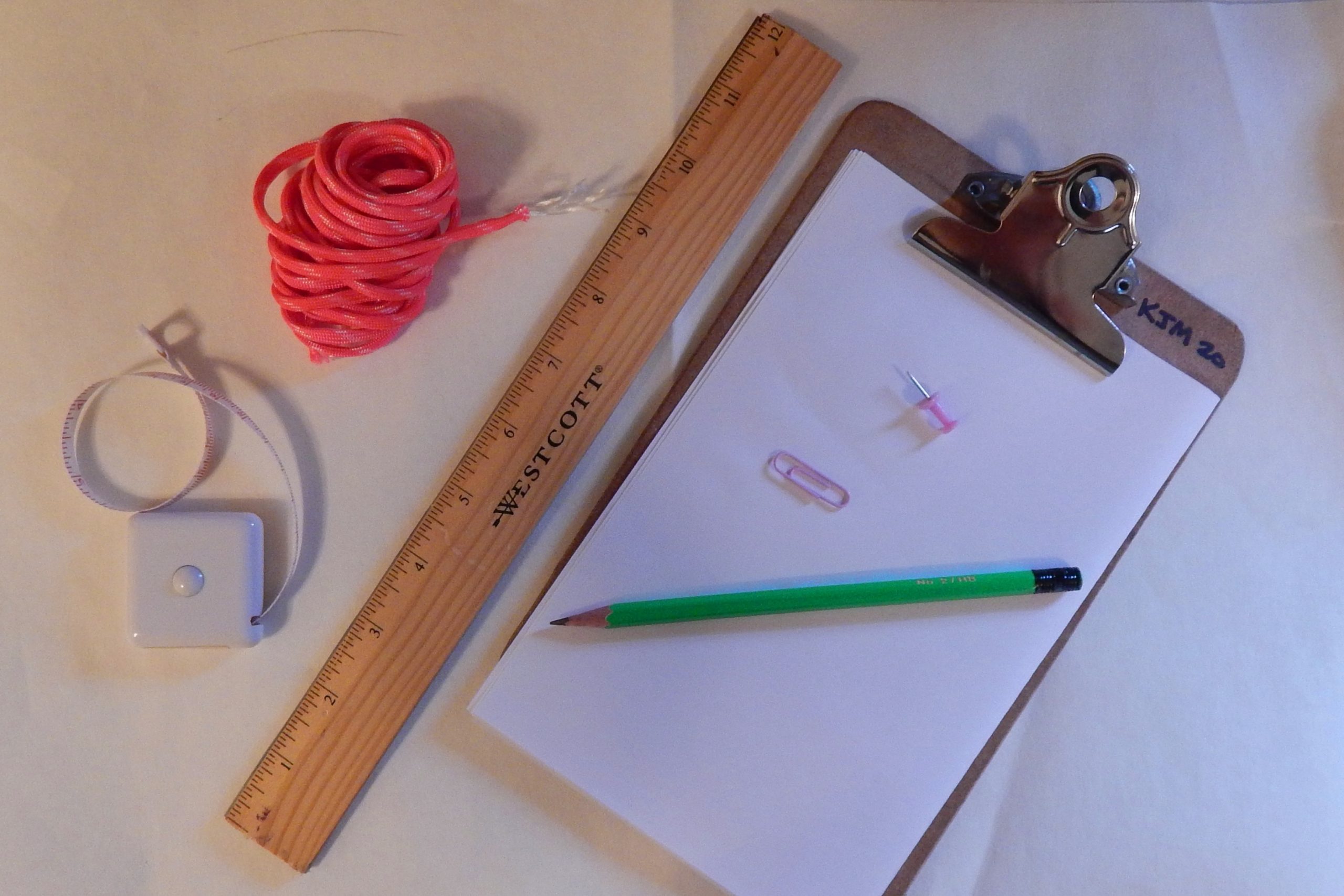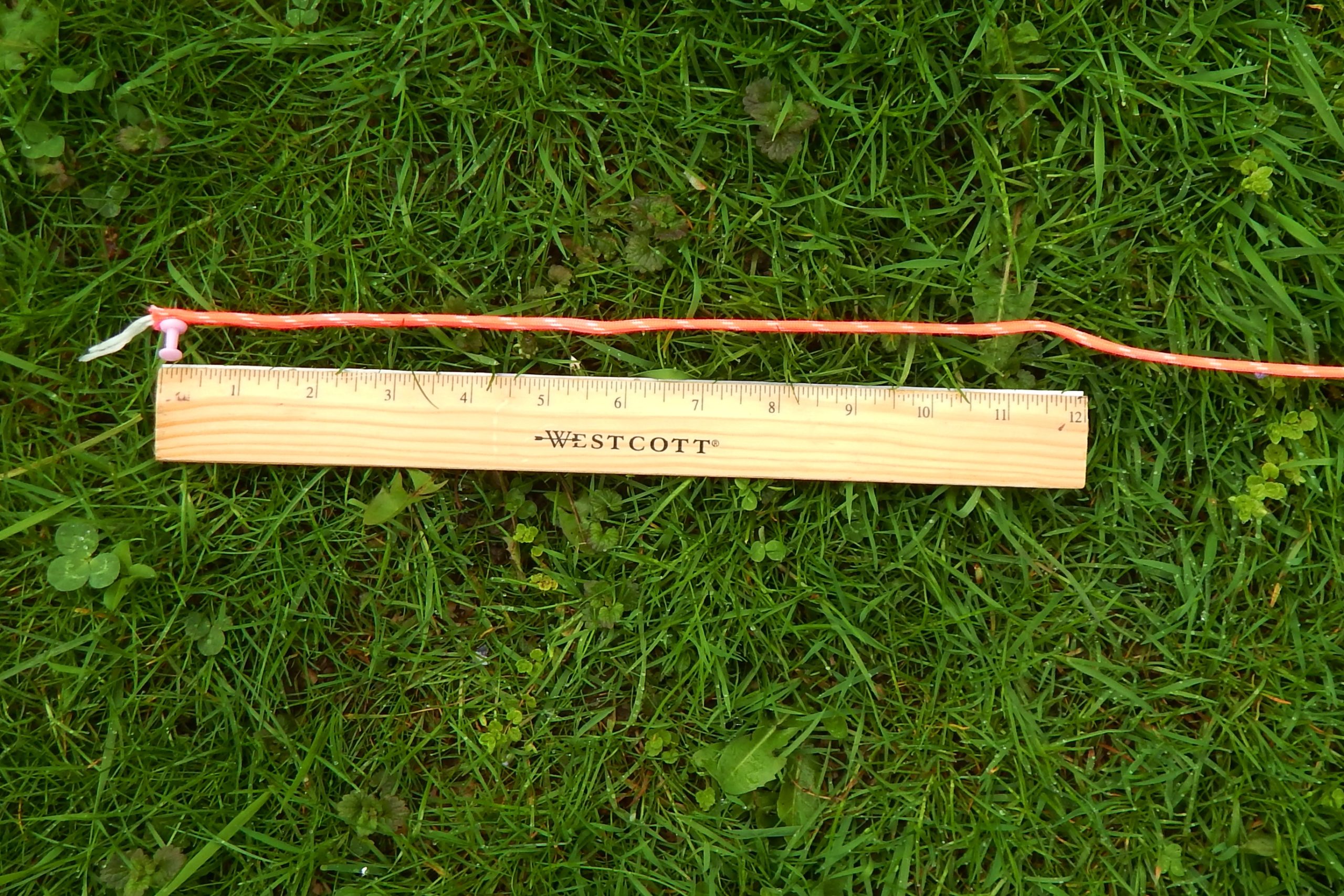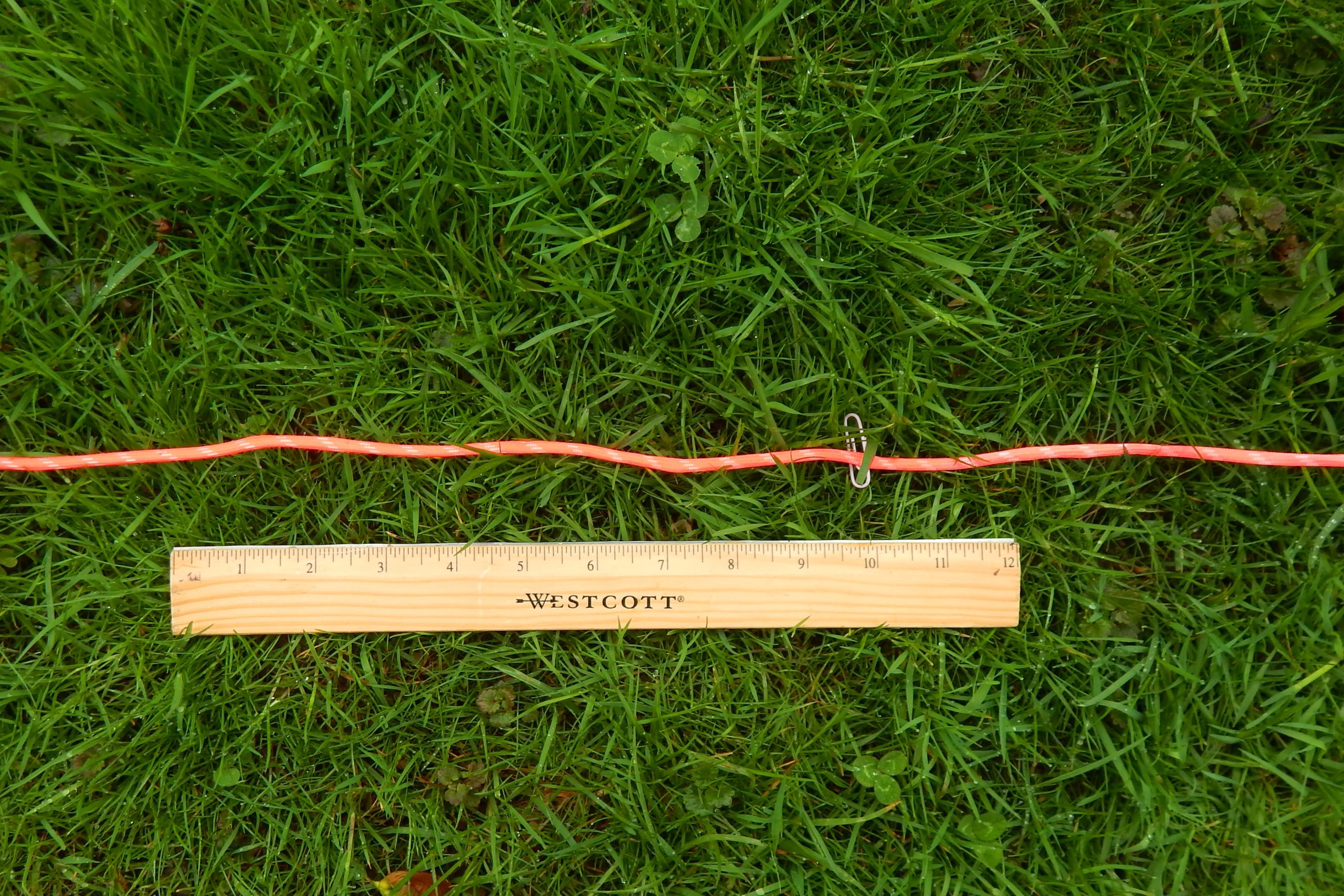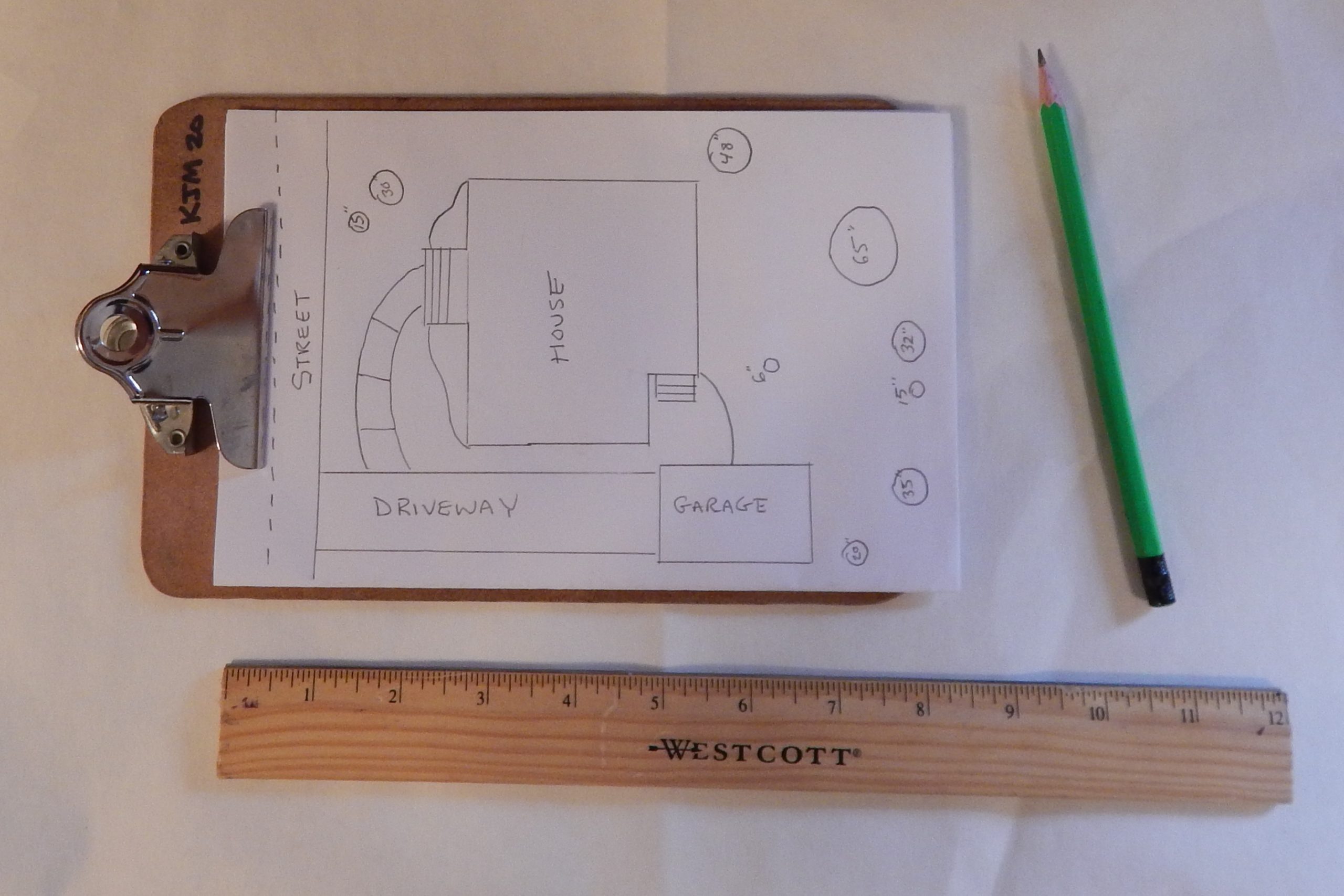Tree Math

Have science fun as a family! Complete activities with parental supervision.
Materials:
- Measuring tape OR a ruler and approximately 8 feet of string
- Thumbtack
- Paper and clipboard or a notebook
- Pencil
- Outdoors area with some trees
- Optional: crayons, markers, or colored pencils
Procedure
- Choose an area with some trees to survey. All the trees in your backyard, around your apartment building, one side of your street, or in a nearby park?
- Make a map of this area on your paper, including major land features like buildings or roads… and the trees. Draw larger circles to represent larger trees and smaller circles for smaller trees. Try to be as precise as you can in mapping out the trees so you can refer to your map later.
- When you measure the size of a tree, wrap the measuring tape or piece of string 4 feet and 6 inches (4.5 feet) up the trunk of the tree. If you do not have measuring tape, wrap string around the tree and then measure the string with the ruler. If the tree is too large for you to wrap your arms around, use the thumbtack to hold the measuring tape or string in place at a height of 4.5 feet, while you walk around the tree to measure.
- Write this measurement within the circle on your map that represents that tree. If you use inches, always measure in inches. If you use centimetres, always use centimetres.
- Do the same for all the trees on your map. Are the measurements all very similar, or are they different?
- Be sure to take a picture or video to share in the Facebook comments on the Buffalo Museum of Science or Tifft Nature Preserve pages!
What’s it all about?
Trees are amazing organisms, growing a little or a lot every year. Depending on the area, the trees living there may have been around for years and are older than anybody you know. Some trees are younger than you, but their branches are still way above your head!
Measuring trees can give you lots of information about them. This is why Foresters take a variety of tree measurements using different techniques. This field of science is called dendrometry. ‘Dendron” is the Greek word for “tree”.
In the field of forestry, a tree’s girth (circumference) can be measured by wrapping measuring tape around the tree’s trunk at a very specific height from the ground: 4.5 feet.
Try It!
- After you collect your data, how do you want to examine and present it? You can make a line or bar graph of the tree girths on your map. Or you can simply list them all from smallest to largest.
